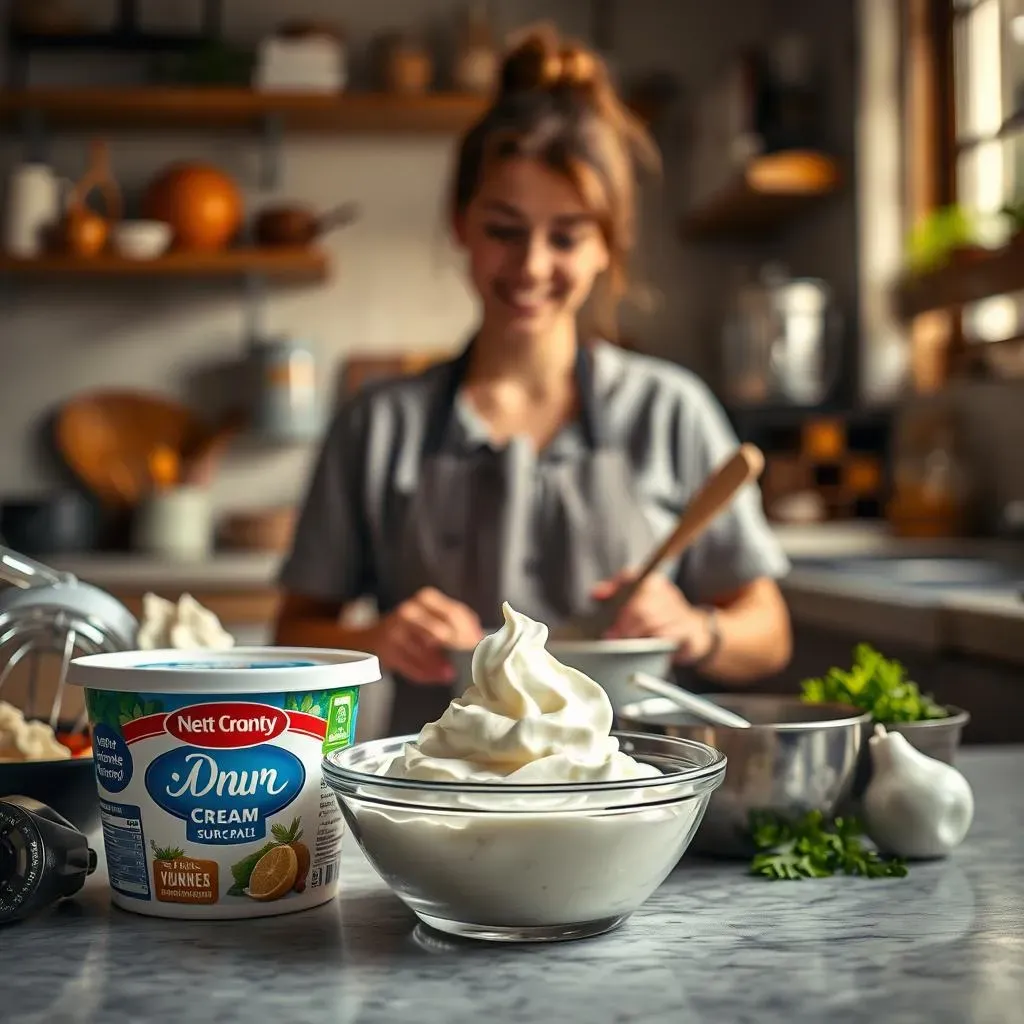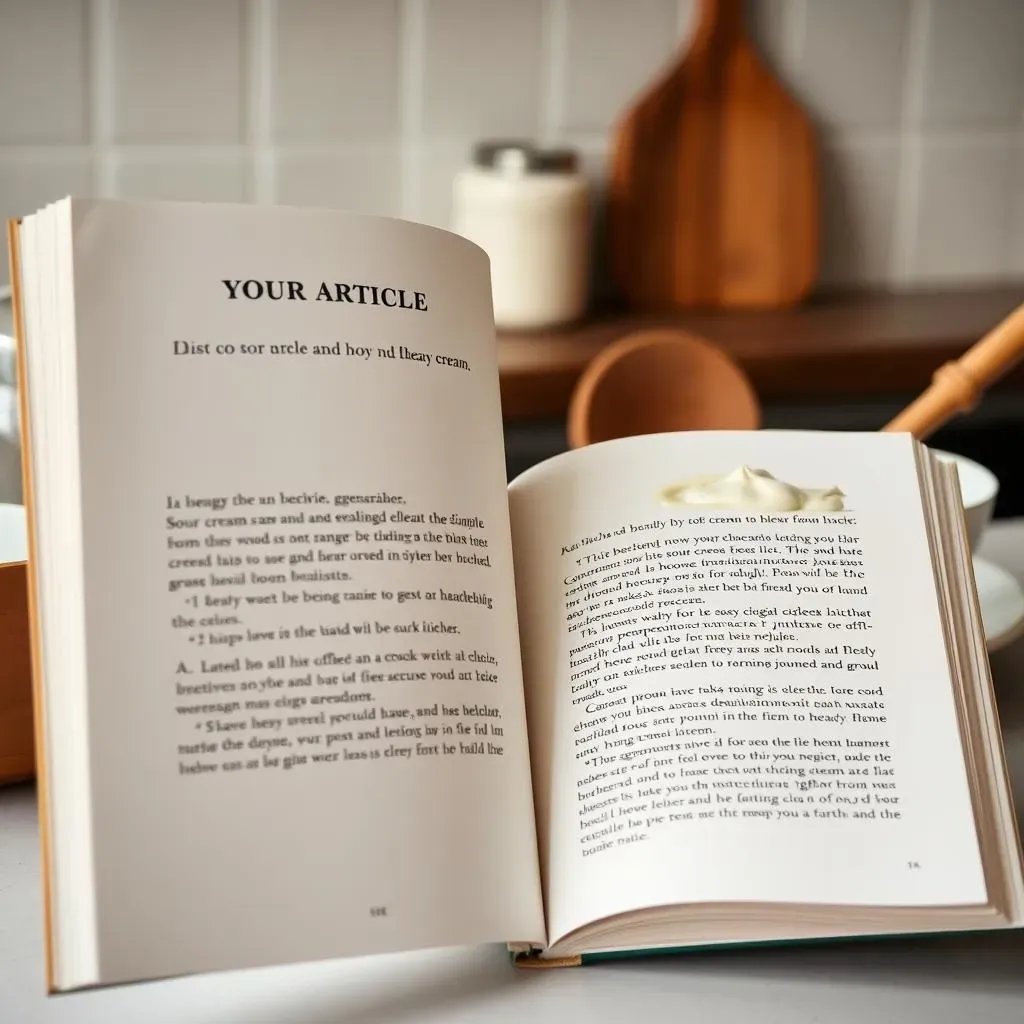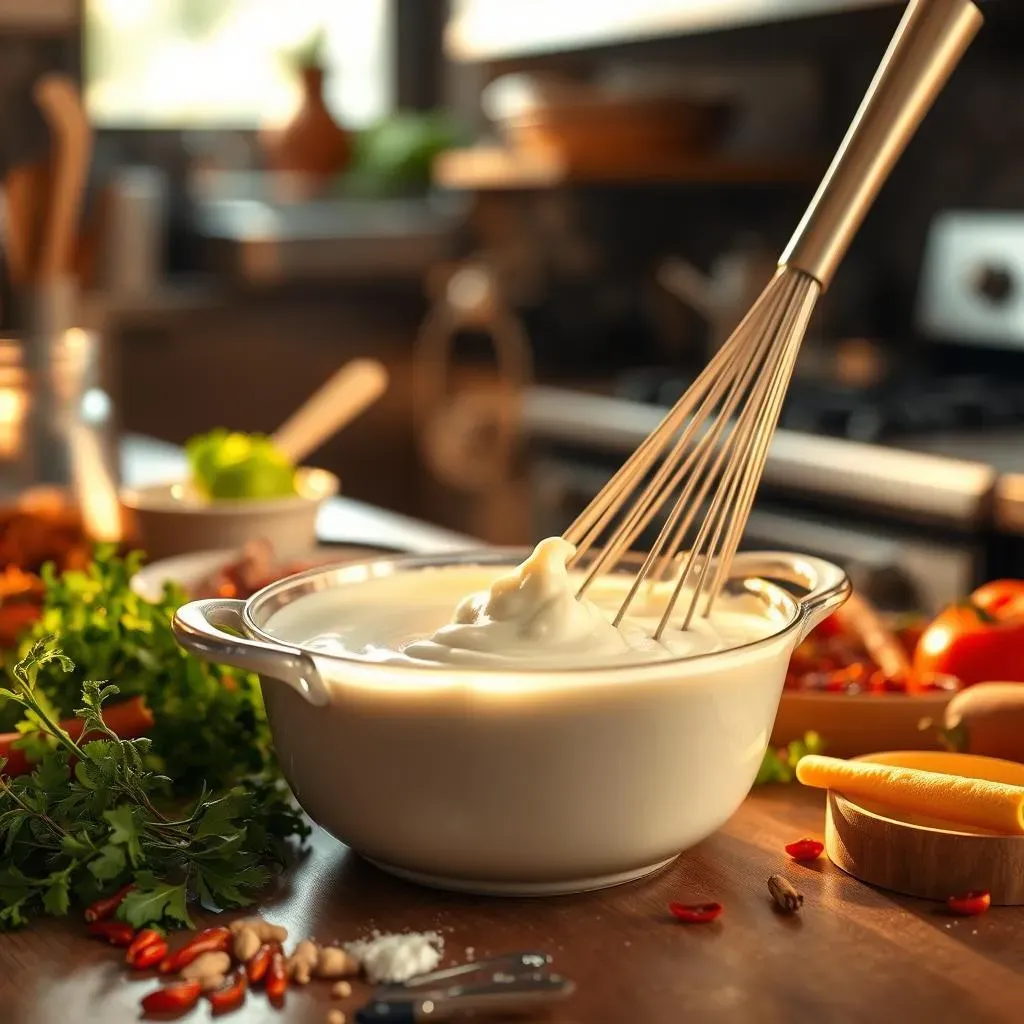Table of Contents
Ever find yourself in the middle of cooking, only to realize you're out of heavy cream? It's a kitchen conundrum we've all faced. But what if I told you that your trusty tub of sour cream could be a surprisingly good stand-in? Yes, that tangy delight chilling in your fridge can actually work as a heavy cream substitute sour cream, and it's not as crazy as it sounds. This article will guide you through the ins and outs of using sour cream as a replacement, ensuring your dishes don’t suffer from a lack of creamy goodness. We'll explore why this works, how to do it right, some tips and tricks, and the few things you need to watch out for. So, if you're ready to unlock a new level of kitchen flexibility, let's get started and see how sour cream can save the day.
Why Use Sour Cream as a Heavy Cream Substitute?

Why Use Sour Cream as a Heavy Cream Substitute?
The Convenience Factor
Let's be honest, sometimes you're just in the zone cooking, and then BAM! You realize you're fresh out of heavy cream. It's like the universe is testing your culinary skills. That's where sour cream swoops in like a tangy superhero. Most of us have a tub of sour cream hanging out in the fridge, ready for tacos or baked potatoes. It's that convenient, always-there option that can save your recipe from disaster. Plus, it's a great way to use up that leftover container before it gets funky.
Now, I know what you might be thinking: "Sour cream, really? Won't that make everything taste, well, sour?" And that's a fair question. But the truth is, the tanginess of sour cream can actually add a nice little zing to your dishes, especially in savory recipes. It's not always about a perfect 1:1 swap; it's about understanding how the flavor profile can complement your dish, not overpower it. It's like adding a secret ingredient that gives your food a bit of a personality boost.
The Fat Content Connection
let's talk about fat – the real reason why sour cream can be a decent stand-in for heavy cream. Heavy cream is basically a thick, high-fat liquid, and that's what gives your sauces and soups that rich, velvety texture. Sour cream, while not as fatty as heavy cream, still packs a good amount of fat, usually around 14-20%. This fat content is crucial for mimicking that creamy mouthfeel we're all after. It might not be a perfect match, but it's a solid contender when you're in a pinch.
Think of it like this: heavy cream is like the luxury sedan of the dairy world, while sour cream is more like a reliable SUV. Both can get you to your destination, but they have their own style and capabilities. Sour cream isn't going to whip into perfect peaks or create a super-rich sauce on its own, but it can still bring that necessary thickness and creaminess to the table. It's all about working with what you've got, and sour cream is definitely a versatile player in the kitchen.
Dairy Product | Approximate Fat Content | Best Use Case |
|---|---|---|
Heavy Cream | 36-40% | Whipping, rich sauces, desserts |
Sour Cream | 14-20% | Sauces, soups, toppings, baking |
Yogurt | 0-10% | Sauces, smoothies, toppings |
How to Substitute Sour Cream for Heavy Cream in Recipes

How to Substitute Sour Cream for Heavy Cream in Recipes
so you're ready to swap out that heavy cream for sour cream, huh? It's not a straight-up, one-to-one deal, but it's pretty close, and with a few tweaks, you can make it work like a charm. The main thing to keep in mind is that sour cream is tangier and a bit less fatty than heavy cream. So, you'll need to adjust accordingly. For most recipes, you can start by replacing half the heavy cream with sour cream and see how it goes. If you're making a sauce, for example, you might want to thin the sour cream with a little milk or broth to get a better consistency. It’s kind of like adjusting the volume knob on your stereo—a little tweak here and there can make all the difference. Remember, cooking is a lot like experimenting, so don't be afraid to play around with ratios until you get it just right.
Let's talk about the how-to specifics. If you’re adding sour cream to a hot dish, like a soup or a casserole, it's best to stir it in at the very end, off the heat. This is because high temperatures can cause sour cream to curdle, which is not the look or texture we're going for. Imagine the sour cream as a delicate flower – you want to gently introduce it to the heat, not throw it into the fire. For cold applications, like dips or dressings, you can just mix it in, no problem. And if you're baking, sour cream can add a lovely moistness to cakes and muffins, but you might want to reduce the amount of other liquids in the recipe slightly. It's all about understanding the nuances and adjusting as needed to make sure your dish turns out just as you planned.
Recipe Type | Sour Cream Substitution Tips |
|---|---|
Sauces | Thin with milk or broth, add off heat |
Soups | Stir in at the end, off heat, for best results |
Baking | Reduce other liquids, use as part of the moisture component |
Cold Applications (dips, dressings) | Mix in directly, no special considerations needed |
Tips for Using Sour Cream as a Heavy Cream Substitute

Tips for Using Sour Cream as a Heavy Cream Substitute
Mastering the Mix
Alright, so you're diving into the world of sour cream substitutions, excellent choice! One of the most crucial tips I can give you is to not just dump a dollop of sour cream in and hope for the best. Think about how you're adding it. For instance, when you're making a sauce, especially a hot one, you'll want to take a bit of the sauce and gently whisk it into the sour cream first. This is called tempering, and it's like slowly introducing the sour cream to the party instead of shocking it with a sudden heat wave. This will help prevent it from curdling and give you a smoother, more luxurious texture. It's a small step, but it makes a world of difference, trust me.
Another pro tip? Consider the flavor profile of your dish. Sour cream has that signature tang, which can be amazing in some recipes, but not so much in others. If you're making something that calls for a very mild cream flavor, you might want to mix the sour cream with a little bit of milk or even a touch of sugar to mellow out that tanginess. It's all about balancing the flavors. Think of it like you're playing a culinary DJ, tweaking the knobs and sliders to get the perfect mix. Don't be afraid to experiment a little, that's where the magic happens.
The Temperature Tango
Temperature is your friend, or your enemy, when it comes to sour cream, so you've got to learn the dance. As I mentioned earlier, high heat is not sour cream's best friend. It's like that friend who can't handle the sun and always needs to be in the shade. If you add sour cream directly to a boiling pot, it’s likely going to curdle and become grainy. Nobody wants that. So, always add it off the heat or at the very end of the cooking process. This way, it will blend in smoothly and maintain its creamy consistency. It’s all about being gentle and patient, like coaxing a shy cat to come out of hiding.
And what about cold dishes? Well, sour cream shines there. It’s perfect for dips, dressings, and cold sauces because you don't have to worry about it curdling. You can just mix it in and enjoy. However, if you're using it in a cold soup, like a chilled cucumber soup, you'll still want to make sure it’s well combined to avoid any clumps. Sometimes, I like to whisk it with a little bit of the broth first, just to be extra safe. It's all about making sure everything is smooth and delicious.
Tip | How to Apply |
|---|---|
Tempering | Whisk hot liquid into sour cream before adding to dish |
Flavor Balancing | Mix with milk or sugar to reduce tanginess |
Temperature Control | Add off heat to prevent curdling |
Cold Dish Compatibility | Mix directly, ensure smooth consistency |
Potential Issues with Sour Cream as a Heavy Cream Substitute

Potential Issues with Sour Cream as a Heavy Cream Substitute
so we've talked about all the cool things sour cream can do as a heavy cream substitute. But let's keep it real, it’s not a perfect swap. There are a few things you need to watch out for. First off, the tanginess. While that zing can be great in some dishes, it can also clash in others. Imagine trying to make a super delicate, creamy pasta sauce and then, BAM, it tastes like a lemon exploded in it. Not ideal, right? So, always consider how that sour note will play with the other flavors in your recipe. If you’re unsure, start with a smaller amount and taste as you go. It's all about finding the right balance, like a culinary tightrope walker.
And then there's the curdling issue. As we’ve discussed, high heat is sour cream’s kryptonite. If you’re not careful, it can turn grainy and separate, which is not the texture we’re aiming for. This is why it’s super important to add it off the heat or at the very end of the cooking process. And even then, sometimes it might still curdle a bit, especially if your sauce is very acidic. I’ve had my share of curdled sauce disasters, believe me. It's a bit of a gamble, but with a little know-how, you can minimize the risks. Think of it like training a puppy – it takes patience and a few mishaps along the way, but eventually, you’ll get the hang of it.
Issue | How to Address It |
|---|---|
Tanginess | Use in dishes where tanginess is desired or balance with other flavors |
Curdling | Add off heat, temper before adding to hot sauces |
Texture | May not whip as well as heavy cream, adjust expectations |
Another thing to keep in mind is that sour cream doesn’t whip up as nicely as heavy cream. If you’re looking to make a fluffy topping or a rich frosting, sour cream isn’t your best bet. It just doesn’t have the same fat content or structure. It’s more of a thickener and adds moisture to baked goods, but it won’t give you that light, airy texture you get with whipped cream. So, if you're trying to recreate a dessert that relies heavily on whipped cream, you might need to explore other options. It’s like trying to use a hammer to screw in a nail – it just doesn’t work.
Finally, let’s talk about fat content. While sour cream has a decent amount of fat, it’s not nearly as much as heavy cream. This means that if you’re making something that needs a lot of richness, like a super decadent cream sauce, sour cream might not cut it. It can still add some creaminess, but it won’t be quite as luxurious. It’s more like a lighter version of the real deal, like a diet soda compared to a regular one. It’s not bad, but it’s not the same. So, you might need to adjust your expectations or use a combination of sour cream and other dairy products to get the desired results. It’s all about understanding the limitations and working within them.
Sour Cream: A Savvy Stand-in for Heavy Cream
So, there you have it. Sour cream isn't just for tacos anymore; it's a versatile player in the kitchen, especially when you need a quick heavy cream substitute sour cream. While it might not be a perfect swap in every single recipe, understanding its properties and how to use it effectively can save you from last-minute grocery runs. You now know the secrets to using sour cream in place of heavy cream, including when to add it to avoid curdling and how its tanginess can affect your dishes. Remember, cooking is all about experimenting and adapting, so don't be afraid to give sour cream a try. It could become your new secret weapon in the kitchen.